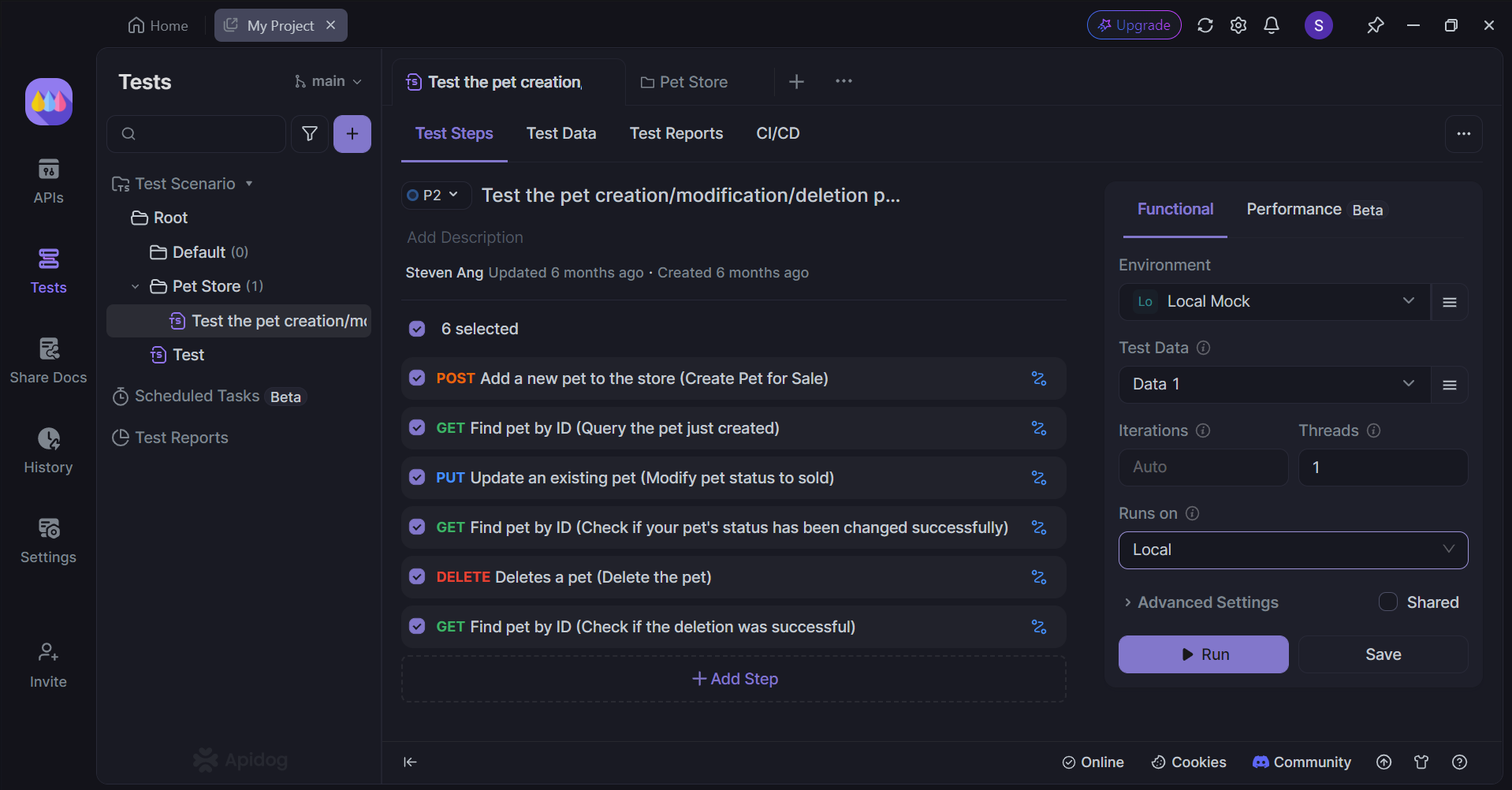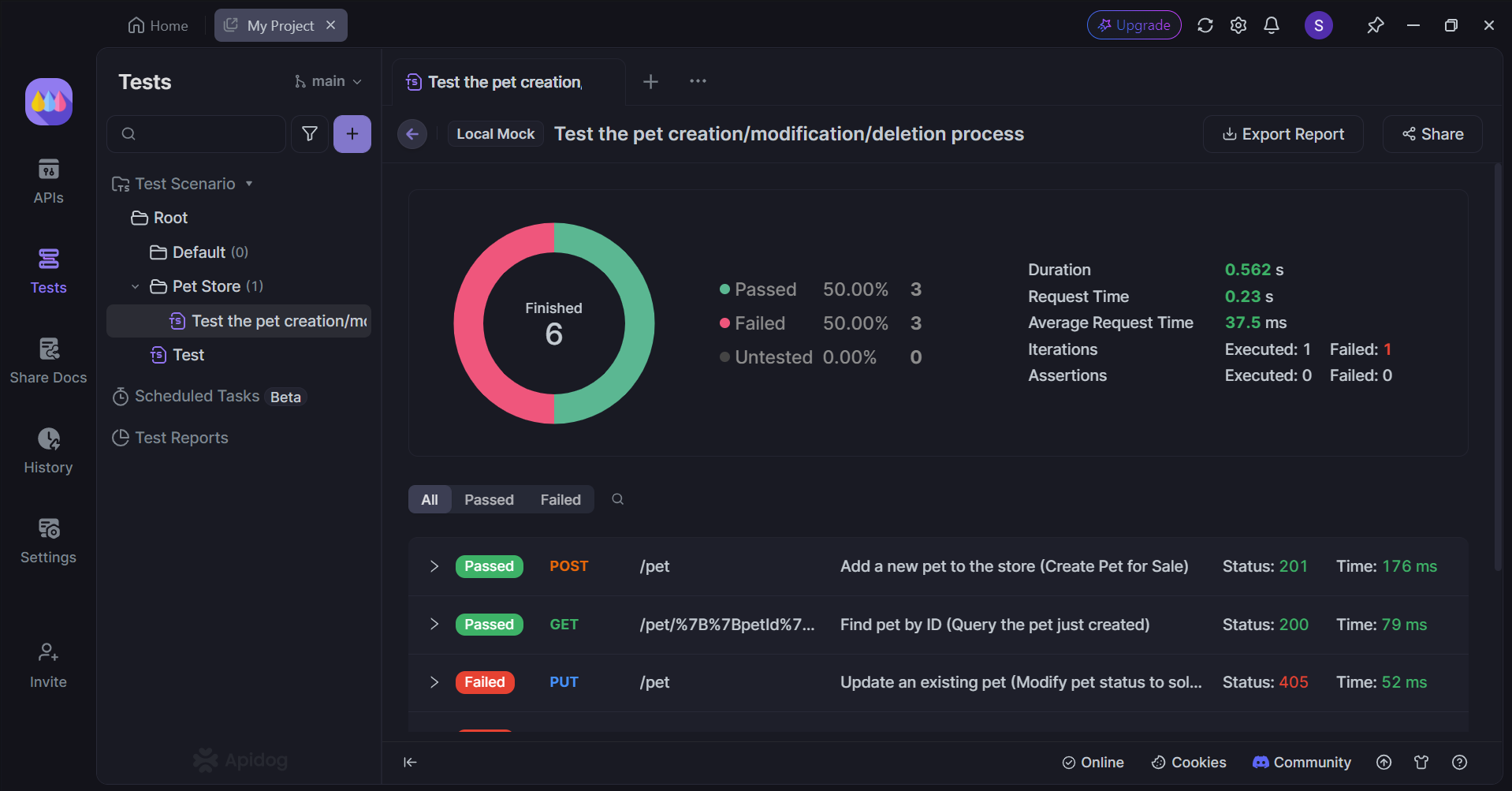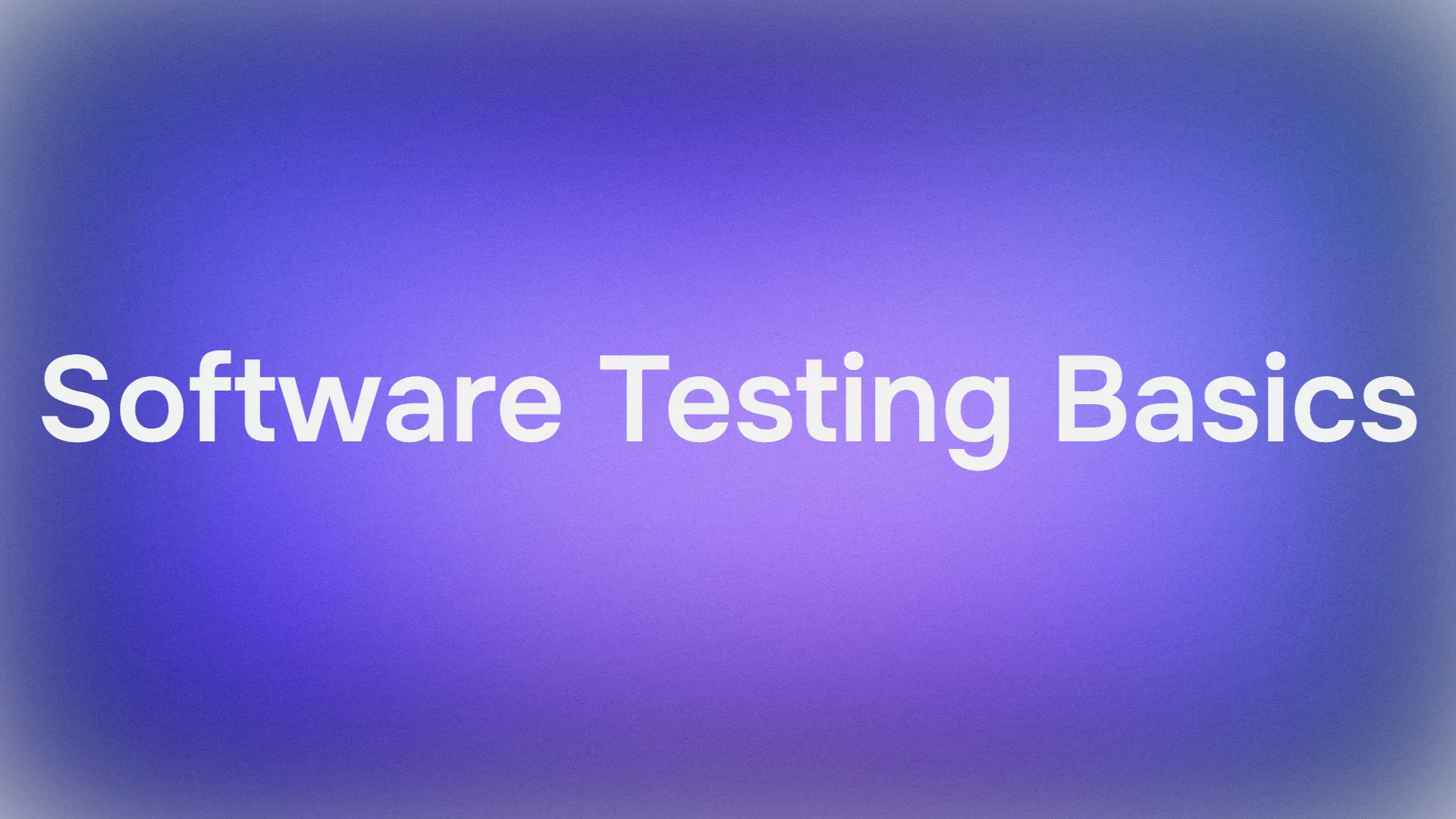In software testing, understanding the distinction between test cases and test scenarios is crucial for effective quality assurance. Both elements play vital roles in ensuring that software applications function as intended, but they serve different purposes and are used at different stages of the testing process.
Apidog has test cases and test scenarios ready for developers to deploy. What makes Apidog's test scenarios extremely valuable is its ability to mimic real-life scenarios and situations, allowing developers to accurately test APIs.
To learn more about test cases and scenarios with Apidog, click the button below!

Test Cases
A test case is a detailed set of instructions designed to validate a specific feature or functionality of a software application. It includes:
- Test Steps: Precise actions that need to be executed.
- Test Data: Specific inputs required for the test.
- Preconditions: Conditions that must be met before the test can be executed.
- Postconditions: Expected state after the test execution.
- Expected Results: The anticipated outcome if the application functions correctly.
Test cases are created to ensure exhaustive testing and are typically derived from test scenarios. They focus on both what to test and how to test, providing a comprehensive framework for verifying software behavior.
Test Scenarios
A test scenario, on the other hand, is a high-level description of a functionality or feature that can be tested. It focuses on what needs to be tested without delving into the specifics of how to conduct the tests. Test scenarios help in understanding the end-to-end functionality of an application and are often derived from business and system requirement specifications (BRS and SRS).
Key Differences
| Aspect | Test Case | Test Scenario |
|---|---|---|
| Detail Level | Low-level, detailed instructions | High-level, broad overview |
| Focus | How to test specific features | What to test in terms of overall functionality |
| Purpose | Ensure detailed verification of features | Validate end-to-end processes |
| Derivation | Derived from test scenarios | Derived from requirement documents like BRS and SRS |
| Resource Requirement | More time and resources needed | Less time and resources needed |
| Ambiguity | No ambiguity due to detailed steps | Potential ambiguity due to high-level nature |
Importance in Software Testing
Both test cases and test scenarios are integral to a robust testing strategy:
- Test Cases provide a structured approach that ensures all aspects of a feature are tested thoroughly. They help in identifying defects by comparing expected outcomes with actual results.
- Test Scenarios offer a broader perspective, helping testers understand how different features interact within the application. They are particularly useful in agile environments where rapid iteration and flexibility are required.
Best Practices
For Writing Test Cases
- Start with Clear Requirements: Ensure that you have a thorough understanding of the requirements before writing test cases.
- Use Clear Language: Write in simple, concise language to avoid confusion.
- Plan for All Scenarios: Include both positive and negative scenarios to cover all possibilities.
- Document Results: Record outcomes clearly for future reference.
- Regularly Update Cases: Keep test cases current with software changes.
For Creating Test Scenarios
- Keep It Simple: Use straightforward descriptions that capture the essence of what needs testing.
- Collaborate with Stakeholders: Engage with developers, users, and other stakeholders to ensure comprehensive coverage.
- Focus on End-to-End Functionality: Ensure scenarios reflect real-world usage patterns.
Apidog - Test APIs Like a Pro
Apidog is the perfect API tool to test APIs, regardless if you need to test a single or a dozen of APIs.


Apidog Test Scenarios
Apidog has a unique testing feature called test scenarios.


Apidog allows you to visually test multiple APIs in a sequence of successive steps. This approach is particularly beneficial for developers who have designed a series of interdependent APIs to execute their functions.
Apidog Test Scenario Results

Apidog will generate a comprehensive report on your test scenario, highlighting the count of successful and failed requests, along with the overall time taken for all the APIs to execute.
Individual API Endpoint Testing With Apidog

Apidog supports developers who wish to test individual APIs and observe each response on its own. All you have to press the Run header, followed by the Send button, in that sequence.

Conclusion
Understanding the differences between test cases and test scenarios is essential for effective software testing. While test cases provide detailed instructions for verifying specific functionalities, test scenarios offer a high-level view of what needs to be tested within an application. Together, they ensure that both individual features and overall system behavior meet quality standards.
By leveraging both elements appropriately, testers can enhance their efficiency, improve coverage, and ultimately deliver more reliable software products.
![[Comparison] Test Case VS Scenario: Spot the Differences!](https://assets.apidog.com/blog/2024/10/test-case-vs-scenario-cover.png)



